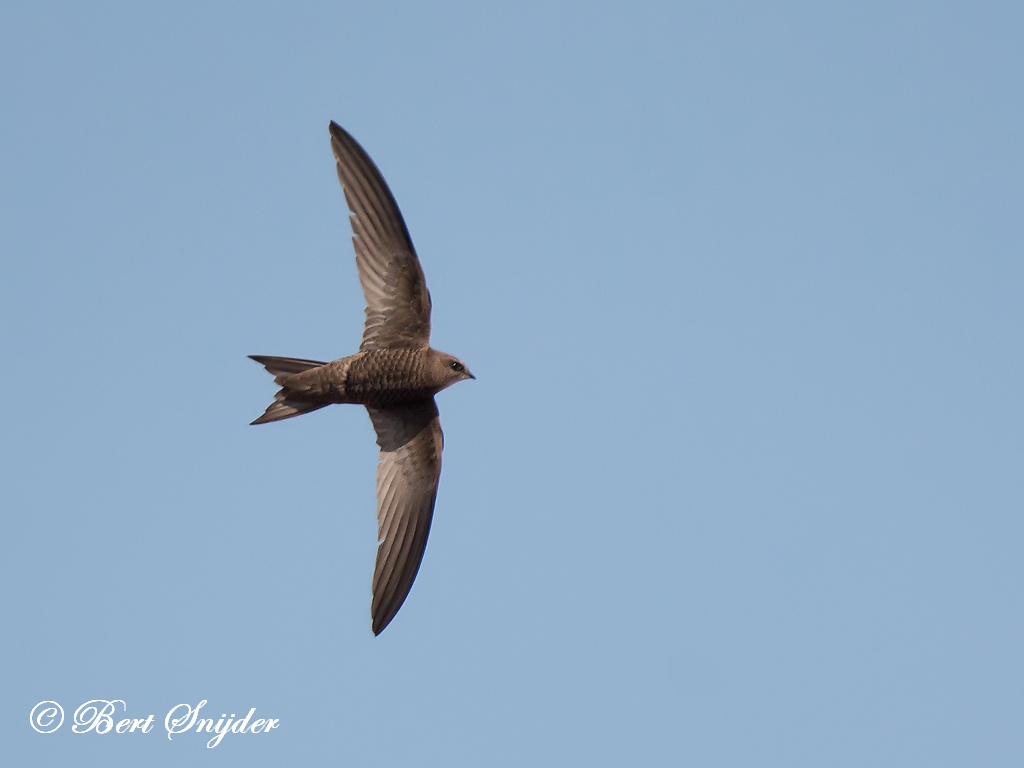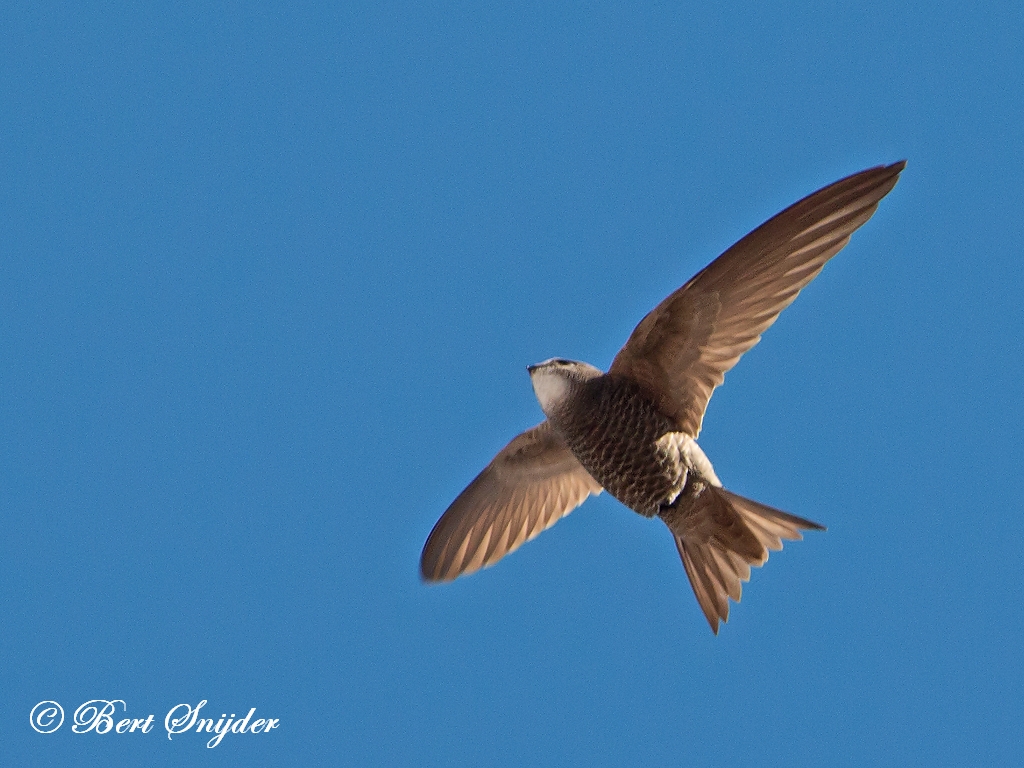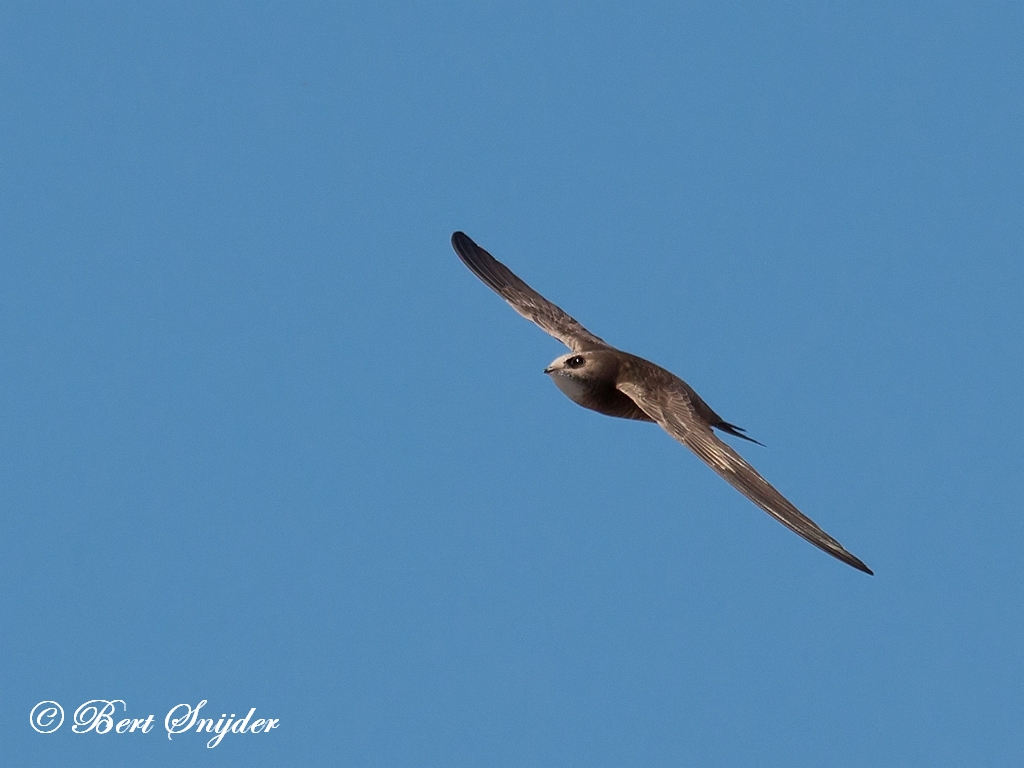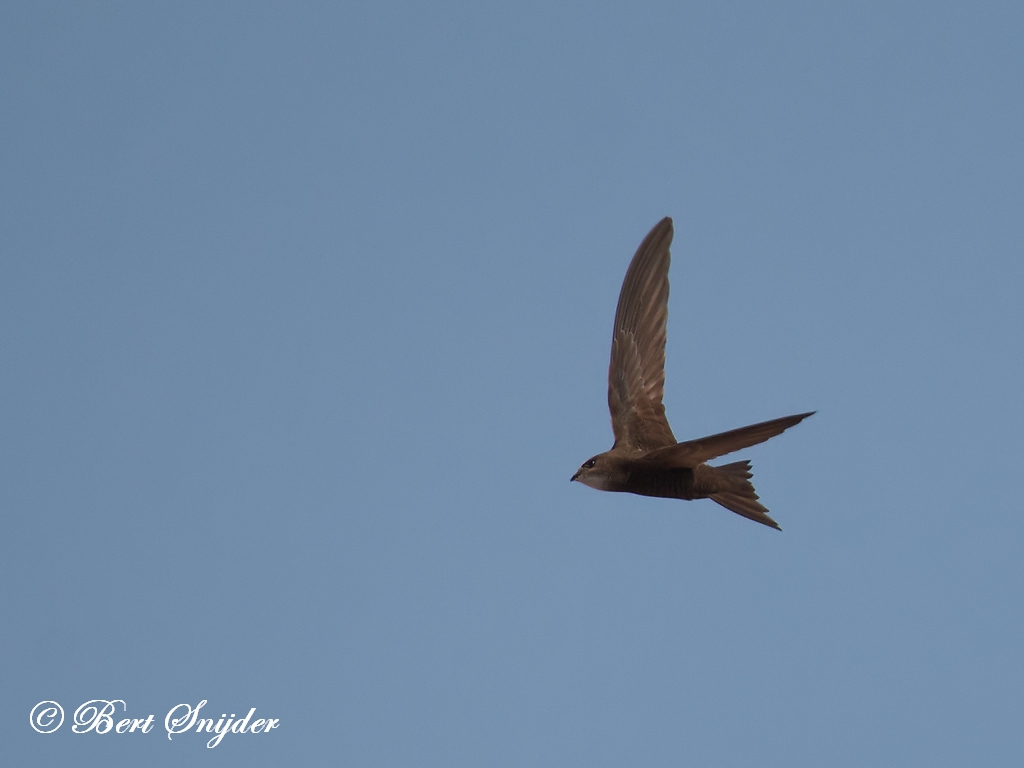Pallid Swift, Vale Gierzwaluw, Fahlsegler, Andorinhão-pálido, Vencejo Pálido
Spotted in the Alentejo region of Portugal. Pallid Swift sound
The Pallid Swift (Apus pallidus) is a small bird, superficially similar to a Barn Swallow or House Martin. It is, however, completely unrelated to those passerine species, since the swifts are in the order Apodiformes. The resemblances between the groups are due to convergent evolution reflecting similar life styles.

More photos at the bottom of this page.
Swifts have very short legs which they use only for clinging to vertical surfaces. The scientific name comes from the Ancient Greek ?????, apous, meaning “without feet”. They never settle voluntarily on the ground. Swifts spend most of their lives in the air, living on the insects they catch in their beaks. They drink on the wing.
The Pallid Swift was first described by English naturalist George Ernest Shelley in 1870.
This 16-17 cm (6.4-6.8 in) long species is very similar to the Common Swift, and separation is only possible with good views. Like its relative, it has a short forked tail and very long swept-back wings that resemble a crescent or a boomerang.
It is entirely dark except for a large white throat patch which is frequently visible from a distance. It is chunkier and browner than Common Swift, and the slightly paler flight feathers, underparts and rump give more contrast than that species. It also has a scalier looking belly and subtly different flight action. The call is a loud dry scream similar to that of its relative, though possibly more disyllabic.
Pallid Swifts breed on cliffs and eaves around the Mediterranean and on the Canary Islands and Madeira, laying two eggs. Like swallows, they are migratory, winter in southern Africa or southeast Asia.
They are rare north of their breeding areas, although they are likely to be under-recorded due to identification problems. Because of its more southerly range, Pallid Swift arrives earlier and leaves later than the closely related Common Swift, so particularly early or late swifts north of the normal range should be carefully observed.





Other synonyms:
Afrikaans: Bruinwindswael
Asturian: Andarón Pálidu
Catalan: Falciot pàl·lid, Falzia pàl·lida
Catalan (Balears): Falzia pàl·lida
Welsh: Gwennol ddu welw, Gwennol welw-ddu
Danish: Gråsejler
German: Fahlsegler
English: Mouse-colored Swift, Mouse-coloured Swift, Nyanza Swift, Pale Brown Swift, Pallid Swift
Spanish: Vencejo Pálido
Estonian: Randpiiritaja, randpiiritaja (rand-piirpääsuke)
Basque: Falciot pàl·lid
Finnish: Vaaleakiitäjä
French: Martinet pâle
Irish: Gabhlán Bánlíoch
Galician: Cirrio pálido, Falciot pàl·lid
Hungarian: Halvány sarlósfecske
Icelandic: Fölsvölungur
Italian: Rondone pallido
Japanese: uruamatsubame, usuamatsubame
Latin: Apus murinus, Apus pallidus
Maltese: Rundun Kannelli
Dutch: Vale Gierzwaluw
Norwegian: Gråseiler
Polish: jerzyk blady
Portuguese: andorinhão pálido, Andorinhão-pálido
Romansh: Randurel fustg
Slovak: dáždovník plavý
Slovenian: bledi hudournik, sivi hudournik
Albanian: Dejka e zbehtë
Serbian: blijeda ciopa
Swedish: Blek tornseglare
Travel Birdwatching Holiday Alentejo, Vacation Portugal for birders to see birds on your trip. Guided Birdwatching Tours and Trips.